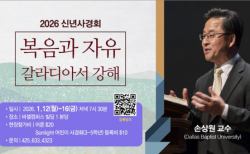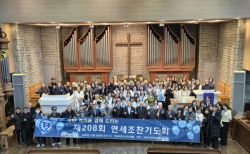Committing Spiritual Adultery for the Sake of building His Kingdom?
By Rev. Cha Tai-Kwang
A few years ago, while serving as a missionary in Kyrgyzstan, I met a fellow missionary from America who is part of the “Insider Movement”. He and his team members practice “Contextualization Level 5” in their approach to missions. (See list of definitions below.)
He admitted that he often goes to the local village mosque and prays with his Muslim friends. When I heard this, I was shocked. I thought to myself: “Isn’t it sin to bow towards the Mecca?”
He explained that he was joining them in Muslim prayer to become an incarnational missionary, just as Jesus Himself was God incarnate. I was more disturbed when I found out that he was with the Navigators.
I was discipled under the Navigators campus ministry while in college, and always held them in high respect. What has happened? What is the “Insider Movement”? Over the next few weeks I hope to introduce this dangerous missiological movement that is not only affecting Muslim, Hindu and Buddhist missions overseas, but also now surfacing in churches in Atlanta and Ashburn, VA.
But first, let me share some thoughts from the Old Testament.
In Ezekiel 23 God uses a provocative allegory to condemn Israel’s sin of idolatry. He calls the two nations (Israel and Judah) prostitutes, for they have left their true lover (the LORD) to whom they had made commitment of faithfulness, and pursued after foreign idols. Thus they were committing spiritual adultery. The words and phrases God uses in that chapter are very descriptive and sensual.
If Chapter 23 were acted out on stage or translated into a film, it would be rated "X". But God does not censor out descriptions of the illicit affair because this is exactly how God feels about His children following after false gods. Idolatry is spiritual prostitution. Our God is a jealous God! (Exodus 20:5)
Let's turn now to ordinary husband-wife relationships. No sane man or woman would like it if his/her spouse were committing adultery. It would make no difference what the adulterous spouse was thinking at the time he was committing the sin. Perhaps in his heart he could be thinking, “I’m actually making love to my wife” as he is enjoying fornication with a prostitute half his age.
Or consider the plight of a woman whose husband is a political prisoner of an oppressive government. The police chief/warden tells her that if she sleeps with him, he will ensure better living condition for her husband and perhaps even shorten the prison sentence. If she slept with the police chief and eventually freed her husband, would he thank her or reject her?
Or consider the case of a Tajik woman who went to UAE to work as a prostitute so that she could send back thousands of dollars to her husband to build a new home for them. When we were living in Samarkand with a Tajik family about 10 years ago, a neighbor actually did this. With the money that she sent, the husband bought a new car and built a very nice brick home. But when he eventually learned from others how she earned that money, he hung himself. In all three cases, the one who slept with another person outside of marriage was guilty of adultery.
I believe that this is no different from a Christian (whether foreigner or local Muslim background believer) who goes to the mosque and joins the Muslims and bows towards the Mecca. At the center of Mecca is the idolatrous black stone, the very stone that, according to Muhammad, was given to Adam and Eve by Allah at the beginning of creation.
Bowing towards this created object is in clear violation of the First and Second Commandments (Exodus 20:3,4). It matters not what he’s thinking in his mind – I’m actually doing the Muslim ritual prayer in the name of Jesus Christ.
Form has meaning! It matters not what the motive/reason is – whether out of fear (to protect his life) or out of a desire to “stay connected” to his community so that he can win them over to Christ. The Lord Jesus Himself could have bowed down before Satan (Matthew 4:8-10) and subsequently earned the right to “all the kingdoms of the world.” Jesus could have thought to Himself: “I'm not really bowing to Satan. I'm still worshiping the Father as I do this. It's really for His purpose to be fulfilled that I am doing this.” If I only bow this once, I don’t have to go to the cross.
But Jesus' definitive response is - "Away from me, Satan! For it is written: `Worship the Lord your God, and serve Him only.' "
For the Korean Church, the memory of the Japanese occupation and their persecution of the Christians is still fresh. Shinto worship was demanded at every public gathering, whether in school or in church. Those pastors who resisted Shinto worship were thrown into prison, tortured and killed.
There were some, however, who compromised and agreed to bow towards the Shinto shrine after signing a declaration at the 1938 Pyong-yang General Assembly. They reasoned that if all the pastors are thrown into prison and killed, who will shepherd the flock? If all the church doors are closed, who will spread the Gospel?
But the Lord was not pleased with their compromise, and chastised them with Hosea 9:1-3 through the wife of Rev. Chu Ki-chul. (You can read more about this account in “More Than Conquerors” by Kwang-jo Chu.)
The temptation will always be there to do whatever we (human beings) can in order to keep the church growing, or to see as many “decisions for Christ” as possible, or to launch successful church planting movements.
But we have to remember that what was vital to Jesus (the glory of the Father) should also be vital to us. Just as the Father sent Him, so Jesus sends us into the world (John 20:21-23). We will face the same enemy, Satan, as we strive to fulfill both the Great Commission (taking the Gospel to the ends of the earth) and the Great Commandment (loving God with all our heart, soul, mind and strength).
May we continually fix our eyes on the Lord Jesus!
Sincerely in Christ,
Rev. Cha Tai-Kwang
Definitions of Different Levels of Contextualization
무슬림권에서 나타나는 여섯 가지 유형의 ‘그리스도 중심의 공동체’(‘C’)를 규정하는 실제적 도구
C1 Model: Traditional church using non-indigenous language.
Christian churches in Muslim countries that exist as islands, removed from the culture. Christians exist as an ethnic/religious minority.
C1 모델 – 비 자생적인 언어(외부인 언어)를 사용하는 전통적 교회
섬같이 존재하는 무슬림권 기독교 교회들은 그 문화로부터 제외 당한다.
기독교인들인 인종적/종교적으로 소수의 그룹으로 존재한다.
C2 Model: Traditional church using indigenous language.
Church uses indigenous language, but in all its cultural forms is far removed from the broader Islamic culture.
C2 모델 - 자생적인 언어(내부인 언어)를 사용하는 전통적 교회
교회는 토착적인 언어를 사용한다. 그러나 그 문화적 형태가 넓은 이슬람 문화의 개념에서 볼 때 아주 격차가 크다.
C3 Model: Contextualized Christ-centered communities using Muslim’s language and non-religiously indigenous cultural forms
Style of worship, dress, etc. are loosely from the indigenous culture. Local rituals and traditions, if used, are purged of religious elements. May meet in a church or more religiously neutral location. Majority of congregation is of Muslim background and call themselves Christians.
C3 모델 – 무슬림 언어와 종교적이지 않고 자생적인 문화 형식들을 사용하는 상황화된 그리스도 중심의 공동체
예배 형태, 옷 차림 등이 자생적인 문화(이슬람 문화)로부터 약간 동떨어져 있다. 만약, 현지 의식과 전통을 사용하더라도 종교적 요소의 모습은 없다. 교회 건물 안에서 모일 수도 있고, 종교적으로 보다 중립적인 장소에서 모일 수도 있다. 회중의 대다수는 무슬림 배경이 있고, 그들 자신들을 ‘그리스도인’이라 부른다.
C4 Model: Contextualized Christ-centered communities using Muslim’s language and biblically permissible cultural and Islamic forms.
Similar to C3 except believers worship looks like Muslim worship, they keep the fast, avoid pork and alcohol, use Islamic terms and dress. Community is almost entirely of Muslim background. Though highly contextualized, believers are not seen as Muslims by the Muslim community. Believers call themselves "followers of Isa Al—Misah," Jesus the Messiah.
C4 모델 – 무슬림의 언어를 사용하며 성경적으로 허용할 수 있는 문화와 이슬람 형식을 사용하는 상황화된 그리스도 중심의 공동체
무슬림 예배 같은 신자들의 예배 형태만 제외하면 C3 모델과 비슷하지만, 그들은 금식하고 돼지고기와 술을 금하고, 이슬람의 단어와 옷차림을 사용한다. 공동체는 거의 대부분 무슬림 배경을 가진다. 비록 매우 상황화 되어있지만, 믿는 자들이 무슬림 공동체에 의해서 무슬림으로 보이지는 않는다. 믿는 자들은 그들 자신을 “메시아 이사(Isa)의 추종자들”이라고 한다.
C5 Model: Christ-centered communities of "Messianic Muslims" who have accepted Jesus as Lord and Savior.
Believers remain legally and socially within Islamic community. Aspects of Islam incompatible with the Bible are rejected or if possible, reinterpreted. Believers may remain active in the mosque. Unsaved Muslims may view C5 believers as deviant and may expel them from the Islamic community. If sufficient numbers permit, a C5 "Messianic mosque" may be established.
C5 모델 – 예수님을 주와 구세주로 영접한 ‘메시아적 무슬림들’의 그리스도 중심의 공동체
신자들은 법적으로나 사회적으로나 이슬람 공동체 안에 남아 있다. 성경과 양립될 수 없는 이슬람의 측면들은 거부되거나 가능하면 재해석된다. 신자들은 모스크에서 여전히 활동할 수도 있다. 구원받지 않은 무슬림들은 C5 신자들을 표준에서 벗어난 사람이라고 볼 것이며, 궁극적으로는 이슬람 공동체에서 추방할 것이다. 전체 마을이 그리스도를 영접한 경우, C5는 ‘메시아적 모스크’가 될 수 있다.
C6 Model: Small Christ-centered communities of secret/underground believers
Isolated by extreme hostility, usually individual believers but sometimes in small groups. Believers typically do not attempt to share their faith, others suffer imprisonment or martyrdom.
C6 모델 – 비밀/지하 신자들로 구성된 소규모 그리스도 중심의 공동체
두려움, 고립 때문에 신자들은 보통 개인적으로 혹은 적은 무리로 모여서 예배한다. 어떤 신자들은 그들의 신앙을 나누려 하지 않고, 또 어떤 사람들은 고난이나 투옥 혹은 순교하기도 한다.
By Rev. Cha Tai-Kwang
A few years ago, while serving as a missionary in Kyrgyzstan, I met a fellow missionary from America who is part of the “Insider Movement”. He and his team members practice “Contextualization Level 5” in their approach to missions. (See list of definitions below.)
He admitted that he often goes to the local village mosque and prays with his Muslim friends. When I heard this, I was shocked. I thought to myself: “Isn’t it sin to bow towards the Mecca?”
He explained that he was joining them in Muslim prayer to become an incarnational missionary, just as Jesus Himself was God incarnate. I was more disturbed when I found out that he was with the Navigators.
I was discipled under the Navigators campus ministry while in college, and always held them in high respect. What has happened? What is the “Insider Movement”? Over the next few weeks I hope to introduce this dangerous missiological movement that is not only affecting Muslim, Hindu and Buddhist missions overseas, but also now surfacing in churches in Atlanta and Ashburn, VA.
But first, let me share some thoughts from the Old Testament.
In Ezekiel 23 God uses a provocative allegory to condemn Israel’s sin of idolatry. He calls the two nations (Israel and Judah) prostitutes, for they have left their true lover (the LORD) to whom they had made commitment of faithfulness, and pursued after foreign idols. Thus they were committing spiritual adultery. The words and phrases God uses in that chapter are very descriptive and sensual.
If Chapter 23 were acted out on stage or translated into a film, it would be rated "X". But God does not censor out descriptions of the illicit affair because this is exactly how God feels about His children following after false gods. Idolatry is spiritual prostitution. Our God is a jealous God! (Exodus 20:5)
Let's turn now to ordinary husband-wife relationships. No sane man or woman would like it if his/her spouse were committing adultery. It would make no difference what the adulterous spouse was thinking at the time he was committing the sin. Perhaps in his heart he could be thinking, “I’m actually making love to my wife” as he is enjoying fornication with a prostitute half his age.
Or consider the plight of a woman whose husband is a political prisoner of an oppressive government. The police chief/warden tells her that if she sleeps with him, he will ensure better living condition for her husband and perhaps even shorten the prison sentence. If she slept with the police chief and eventually freed her husband, would he thank her or reject her?
Or consider the case of a Tajik woman who went to UAE to work as a prostitute so that she could send back thousands of dollars to her husband to build a new home for them. When we were living in Samarkand with a Tajik family about 10 years ago, a neighbor actually did this. With the money that she sent, the husband bought a new car and built a very nice brick home. But when he eventually learned from others how she earned that money, he hung himself. In all three cases, the one who slept with another person outside of marriage was guilty of adultery.
I believe that this is no different from a Christian (whether foreigner or local Muslim background believer) who goes to the mosque and joins the Muslims and bows towards the Mecca. At the center of Mecca is the idolatrous black stone, the very stone that, according to Muhammad, was given to Adam and Eve by Allah at the beginning of creation.
Bowing towards this created object is in clear violation of the First and Second Commandments (Exodus 20:3,4). It matters not what he’s thinking in his mind – I’m actually doing the Muslim ritual prayer in the name of Jesus Christ.
Form has meaning! It matters not what the motive/reason is – whether out of fear (to protect his life) or out of a desire to “stay connected” to his community so that he can win them over to Christ. The Lord Jesus Himself could have bowed down before Satan (Matthew 4:8-10) and subsequently earned the right to “all the kingdoms of the world.” Jesus could have thought to Himself: “I'm not really bowing to Satan. I'm still worshiping the Father as I do this. It's really for His purpose to be fulfilled that I am doing this.” If I only bow this once, I don’t have to go to the cross.
But Jesus' definitive response is - "Away from me, Satan! For it is written: `Worship the Lord your God, and serve Him only.' "
For the Korean Church, the memory of the Japanese occupation and their persecution of the Christians is still fresh. Shinto worship was demanded at every public gathering, whether in school or in church. Those pastors who resisted Shinto worship were thrown into prison, tortured and killed.
There were some, however, who compromised and agreed to bow towards the Shinto shrine after signing a declaration at the 1938 Pyong-yang General Assembly. They reasoned that if all the pastors are thrown into prison and killed, who will shepherd the flock? If all the church doors are closed, who will spread the Gospel?
But the Lord was not pleased with their compromise, and chastised them with Hosea 9:1-3 through the wife of Rev. Chu Ki-chul. (You can read more about this account in “More Than Conquerors” by Kwang-jo Chu.)
The temptation will always be there to do whatever we (human beings) can in order to keep the church growing, or to see as many “decisions for Christ” as possible, or to launch successful church planting movements.
But we have to remember that what was vital to Jesus (the glory of the Father) should also be vital to us. Just as the Father sent Him, so Jesus sends us into the world (John 20:21-23). We will face the same enemy, Satan, as we strive to fulfill both the Great Commission (taking the Gospel to the ends of the earth) and the Great Commandment (loving God with all our heart, soul, mind and strength).
May we continually fix our eyes on the Lord Jesus!
Sincerely in Christ,
Rev. Cha Tai-Kwang
Definitions of Different Levels of Contextualization
무슬림권에서 나타나는 여섯 가지 유형의 ‘그리스도 중심의 공동체’(‘C’)를 규정하는 실제적 도구
C1 Model: Traditional church using non-indigenous language.
Christian churches in Muslim countries that exist as islands, removed from the culture. Christians exist as an ethnic/religious minority.
C1 모델 – 비 자생적인 언어(외부인 언어)를 사용하는 전통적 교회
섬같이 존재하는 무슬림권 기독교 교회들은 그 문화로부터 제외 당한다.
기독교인들인 인종적/종교적으로 소수의 그룹으로 존재한다.
C2 Model: Traditional church using indigenous language.
Church uses indigenous language, but in all its cultural forms is far removed from the broader Islamic culture.
C2 모델 - 자생적인 언어(내부인 언어)를 사용하는 전통적 교회
교회는 토착적인 언어를 사용한다. 그러나 그 문화적 형태가 넓은 이슬람 문화의 개념에서 볼 때 아주 격차가 크다.
C3 Model: Contextualized Christ-centered communities using Muslim’s language and non-religiously indigenous cultural forms
Style of worship, dress, etc. are loosely from the indigenous culture. Local rituals and traditions, if used, are purged of religious elements. May meet in a church or more religiously neutral location. Majority of congregation is of Muslim background and call themselves Christians.
C3 모델 – 무슬림 언어와 종교적이지 않고 자생적인 문화 형식들을 사용하는 상황화된 그리스도 중심의 공동체
예배 형태, 옷 차림 등이 자생적인 문화(이슬람 문화)로부터 약간 동떨어져 있다. 만약, 현지 의식과 전통을 사용하더라도 종교적 요소의 모습은 없다. 교회 건물 안에서 모일 수도 있고, 종교적으로 보다 중립적인 장소에서 모일 수도 있다. 회중의 대다수는 무슬림 배경이 있고, 그들 자신들을 ‘그리스도인’이라 부른다.
C4 Model: Contextualized Christ-centered communities using Muslim’s language and biblically permissible cultural and Islamic forms.
Similar to C3 except believers worship looks like Muslim worship, they keep the fast, avoid pork and alcohol, use Islamic terms and dress. Community is almost entirely of Muslim background. Though highly contextualized, believers are not seen as Muslims by the Muslim community. Believers call themselves "followers of Isa Al—Misah," Jesus the Messiah.
C4 모델 – 무슬림의 언어를 사용하며 성경적으로 허용할 수 있는 문화와 이슬람 형식을 사용하는 상황화된 그리스도 중심의 공동체
무슬림 예배 같은 신자들의 예배 형태만 제외하면 C3 모델과 비슷하지만, 그들은 금식하고 돼지고기와 술을 금하고, 이슬람의 단어와 옷차림을 사용한다. 공동체는 거의 대부분 무슬림 배경을 가진다. 비록 매우 상황화 되어있지만, 믿는 자들이 무슬림 공동체에 의해서 무슬림으로 보이지는 않는다. 믿는 자들은 그들 자신을 “메시아 이사(Isa)의 추종자들”이라고 한다.
C5 Model: Christ-centered communities of "Messianic Muslims" who have accepted Jesus as Lord and Savior.
Believers remain legally and socially within Islamic community. Aspects of Islam incompatible with the Bible are rejected or if possible, reinterpreted. Believers may remain active in the mosque. Unsaved Muslims may view C5 believers as deviant and may expel them from the Islamic community. If sufficient numbers permit, a C5 "Messianic mosque" may be established.
C5 모델 – 예수님을 주와 구세주로 영접한 ‘메시아적 무슬림들’의 그리스도 중심의 공동체
신자들은 법적으로나 사회적으로나 이슬람 공동체 안에 남아 있다. 성경과 양립될 수 없는 이슬람의 측면들은 거부되거나 가능하면 재해석된다. 신자들은 모스크에서 여전히 활동할 수도 있다. 구원받지 않은 무슬림들은 C5 신자들을 표준에서 벗어난 사람이라고 볼 것이며, 궁극적으로는 이슬람 공동체에서 추방할 것이다. 전체 마을이 그리스도를 영접한 경우, C5는 ‘메시아적 모스크’가 될 수 있다.
C6 Model: Small Christ-centered communities of secret/underground believers
Isolated by extreme hostility, usually individual believers but sometimes in small groups. Believers typically do not attempt to share their faith, others suffer imprisonment or martyrdom.
C6 모델 – 비밀/지하 신자들로 구성된 소규모 그리스도 중심의 공동체
두려움, 고립 때문에 신자들은 보통 개인적으로 혹은 적은 무리로 모여서 예배한다. 어떤 신자들은 그들의 신앙을 나누려 하지 않고, 또 어떤 사람들은 고난이나 투옥 혹은 순교하기도 한다.
© 2020 Christianitydaily.com All rights reserved. Do not reproduce without permission.




































